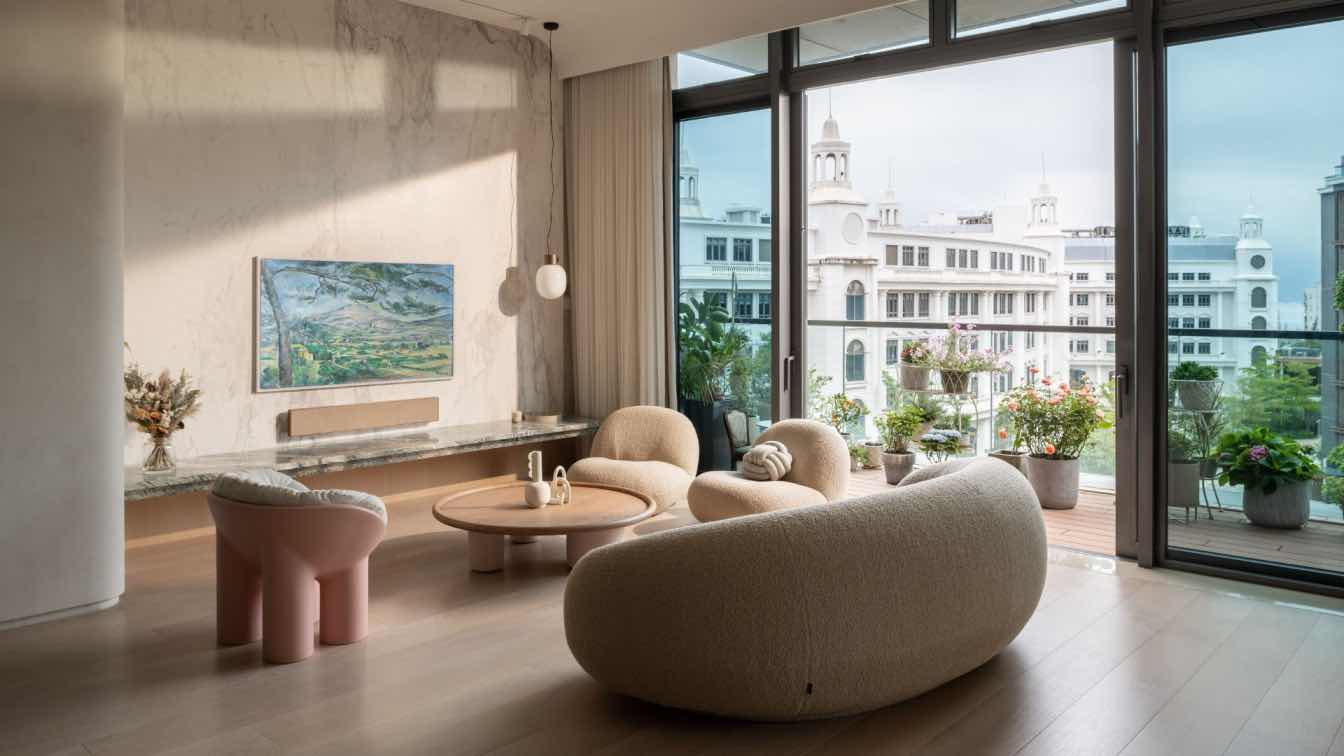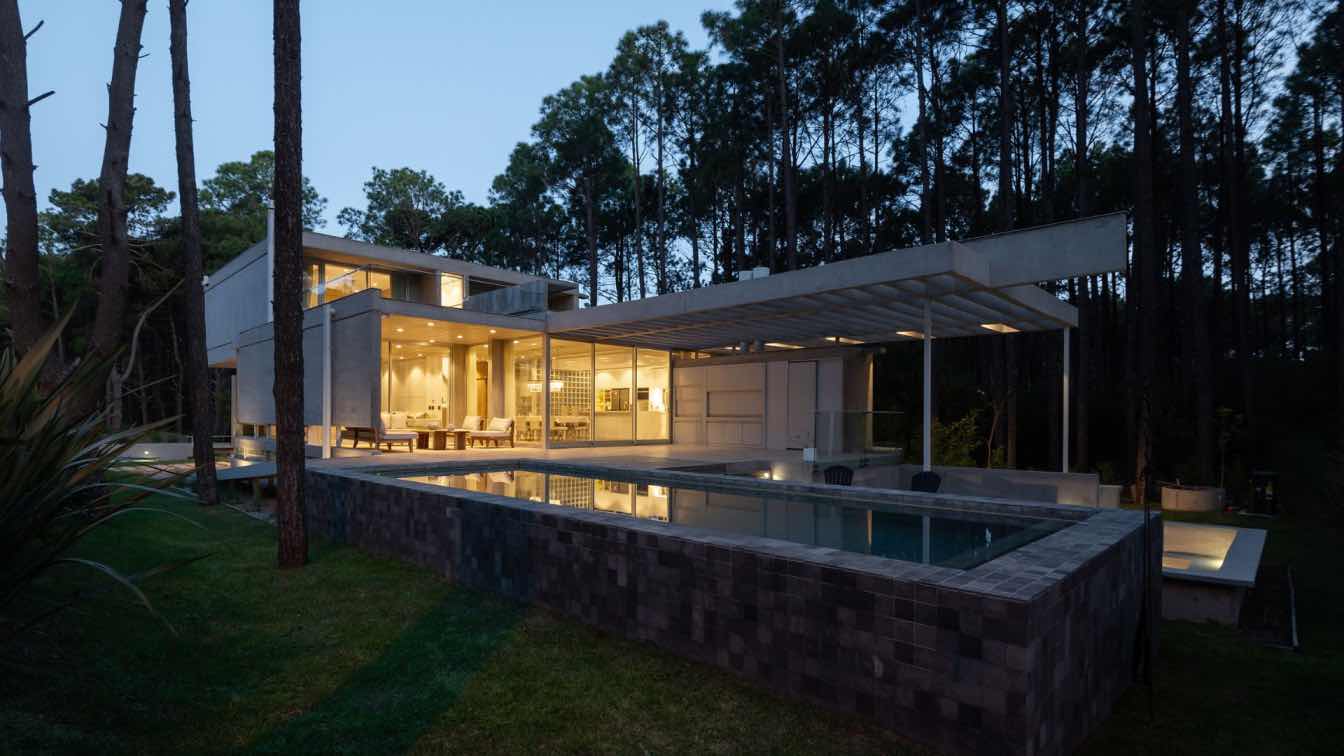A wellbeing-driven haven inspired by Paul Cézanne
“Our muse came in the form of art, specifically, the celebrated post-impressionistic works of French artist, Paul Cézanne. His paintings of Provence formed the basis of our narrative, reflecting the calming greenery and tranquil mountainous landscapes of his homeland.”
— Kenny Kinugasa-Tsui, co-founder of Bean Buro
“Through Cézanne’s art, we envisioned a design language that embodied elegance and playfulness—combining natural timber, green hues, curvaceous forms, and vertical elements inspired by trees.”
— Lorène Faure, co-founder of Bean Buro
The Brief: A Beacon of Wellbeing in Residential Design
We were tasked with designing a home that would not only fulfil the practical needs of a four-member family in Hong Kong but, crucially, would serve as a haven for mental health and wellbeing post-pandemic. We sought to create an environment that harnesses the power of playful design and soothing colours to facilitate harmony and elevated mood for this family in this three-storey mountainous residence.
The Narrative: A Palette of Positivity
Our muse came in the form of art, specifically, the celebrated post-impressionistic works of French artist, Paul Cézanne. His paintings of Provence formed the basis of our narrative, reflecting the calming greenery and tranquil mountainous landscapes of his homeland. Through his art, we envisioned a design language that embodied elegance and playfulness—combining natural timber, green hues, curvaceous forms, and vertical elements inspired by trees.

The Process: Bespoke Engagement and Sustainable Living
In our process, we did not merely design for the family but with them. We embarked on intensive design workshops, engaging the clients in generating creative, health-conscious, and environmentally responsible ideas relevant to their daily routines. We encouraged them to think creatively beyond the initial brief, resulting in a wish-list of functional spaces - from a comfortable lounge for receiving guests to diverse children's activity areas.
The Solution: Composition of Connective Spaces
At the heart of our solution lay the spatial arrangement and composition heavily inspired by the 'building within a building' concept. We developed private, semi-private, and public spaces across the three levels of the apartment and a roof terrace, each designed to cater to diverse activities and routines of each family member, while promoting connectivity and interaction through spatial elements such as staircase volumes.
The Materials: Natural Aesthetic Meets Playful Functionality
The materials, colour scheme and textures were meticulously selected to reflect our calming natural aesthetic. Neutral elements of timber, light beige textured paint and nodes of green accents were woven into custom furniture and other design elements. We placed a high priority on durability and functionality, as seen in the use of colourful terrazzo flooring in the kitchen and entrance area.
Environmental Design: Sensory Experience for Overall Wellbeing
Understanding that lighting, acoustics, and material selection can heavily impact a person’s mental state, we took special care to address these components. Our designs incorporated highly efficient acoustic partitions, an array of varied lighting conditions, and a careful consideration of colour temperature. These elements worked in harmony to create diverse atmospheres suitable to the varied preferences and activities of different family members, while fostering an overall soothing and comfortable home environment.
The Challenge: Human-Centric Design for Mental Health Recovery
The defining challenge was encapsulated not just in solving spatial intricacies to meet the diverse needs of the family, but in creating a healing environment for mental health recovery during a post-pandemic era. We were required to comprehend the multifaceted layers of mental health and how design could aid in alleviating stress. Through key creative choices, empathetic engagement and a collaborative design process, we were able to successfully create a home that met all functional requirements, while also promising flexibility, transformation and coherence for the years to come. This project is our testament to the value of wellbeing in residential design.





























A cross-cultural studio
Bean Buro is an award-winning studio with origins from France, the UK and Japan, led by RIBA architects Lorène Faure and Kenny Kinugasa-Tsui, as a close-knitted team of cross-cultural designers to provide architectural interior design services. The studio was founded in 2013 in Hong Kong and has rapidly gained an international reputation as a unique practice.
Tasteful & distinguished designs
With a breadth of industry experience, the studio work across a range of luxury residential, commercial, hospitality, F&B, retail and mixed-use projects with a reputation in producing high-quality architectural interior designs that are fresh, tasteful and elegant. We work with a network of specialists, suppliers, and adopt a design-lead process with our clients that is collaborative, engaging and rigorous.
Narrative philosophy
We believe architecture is an emotional, spatial experience produced by both the user and the creator. Our inspirations stem from the observation, speculation and analysis of contextual aspects such as historical, environmental, cultural and social factors. We poetically interpret the exchanges of these factors to create humanistic narratives for our designs. We use artistic representations of drawings and models to explore ‘out-of-the-box’ ideas’. These are the driving forces for us to create designs that are rich in intellectual and imaginative qualities.





